
Question and Answers Forum
Question Number 51658 by ajfour last updated on 29/Dec/18
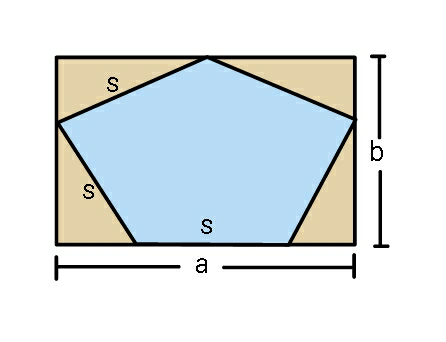
Commented by ajfour last updated on 29/Dec/18

Commented by ajfour last updated on 29/Dec/18

Commented by afachri last updated on 29/Dec/18

Commented by ajfour last updated on 29/Dec/18

Commented by afachri last updated on 29/Dec/18

Commented by Kunal12588 last updated on 29/Dec/18

Commented by ajfour last updated on 29/Dec/18

Answered by afachri last updated on 29/Dec/18
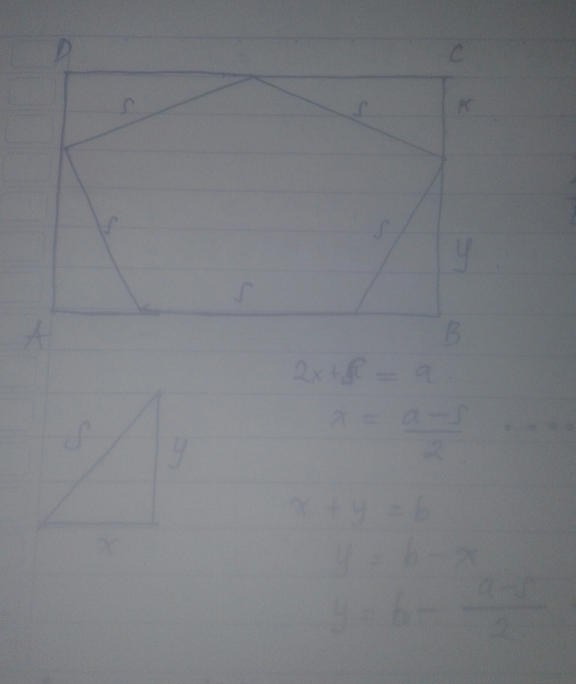
Commented by mr W last updated on 29/Dec/18
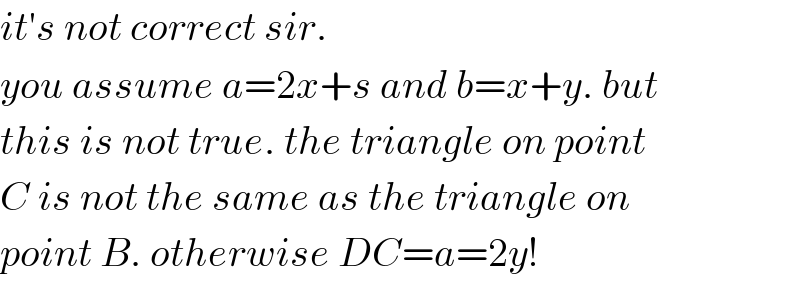
Commented by afachri last updated on 29/Dec/18

Answered by afachri last updated on 29/Dec/18
![side a 2x + s = a x = ((a−s)/2) side b x + y = b y = b − x y = b − ((a−s)/2) based on phytagoras theorm : s^2 = x^2 + y^2 s^2 = (((a−s)/2))^2 + (b − ((a−s)/2))^2 s^2 = (((a−s)^2 )/4) + b^2 − b(a−s) + (((a−s)^2 )/4) s^2 = b^2 − ab + bs + (((a−s)^2 )/2) then multiple by 2 2s^2 = 2b^2 − 2ab + 2bs + (a^2 − 2as + s^2 ) 2s^2 = s^2 + 2(b−a)s + (a^2 + 2b^2 − 2ab) s^2 − 2(b − a)s = a^2 + 2b^2 − 2ab s^2 − 2(b−a)s + (b−a)^2 = a^2 + 2b^2 − 2ab + (b−a)^2 [ s − (b−a) ]^2 = 2a^2 − 4ab + 3b^2 [ s − (b−a) ]^2 = 2(a−b)^2 + b^2 s − (b−a) = (√(2(a−b)^2 + b^2 )) s = (b−a) + (√(2(a−b)^2 + b^2 ))](Q51681.png)
Answered by mr W last updated on 29/Dec/18
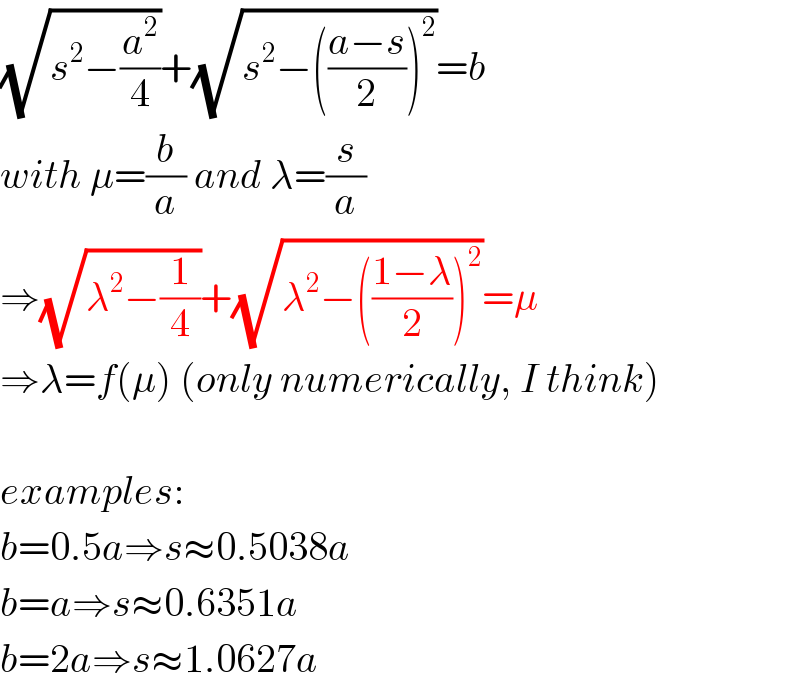
Commented by mr W last updated on 29/Dec/18
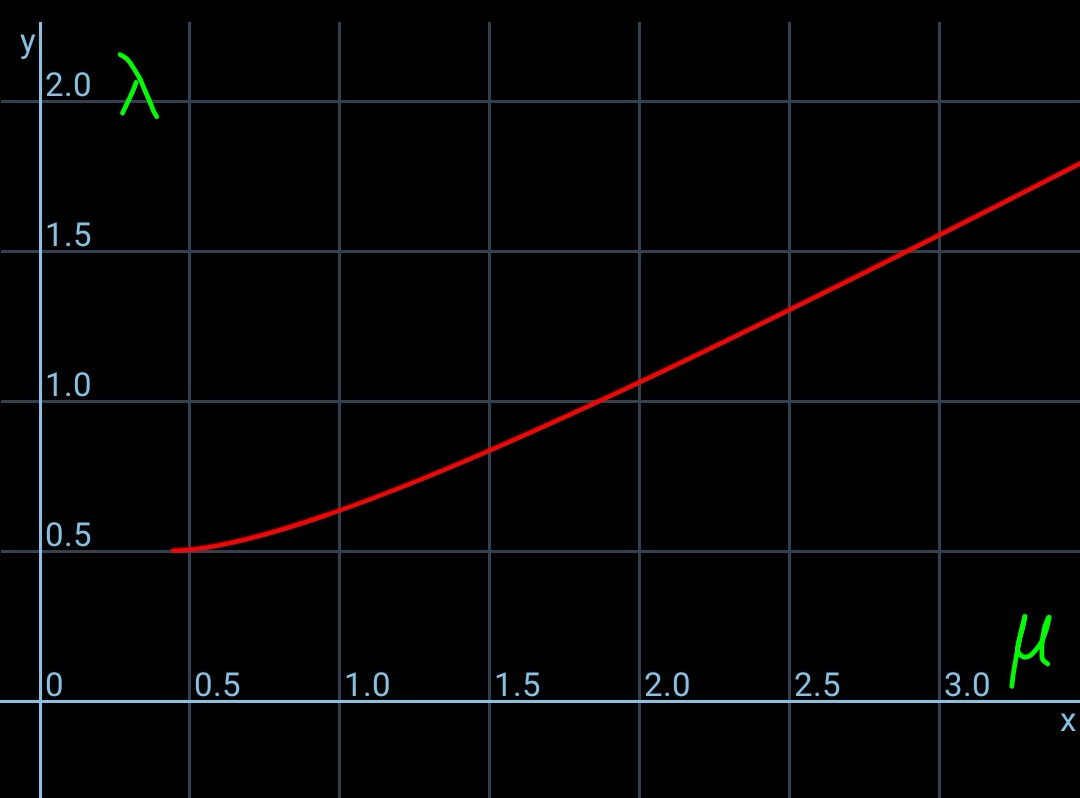
Commented by ajfour last updated on 29/Dec/18

Commented by mr W last updated on 29/Dec/18

Commented by mr W last updated on 29/Dec/18

Commented by afachri last updated on 30/Dec/18

Commented by ajfour last updated on 30/Dec/18

Commented by afachri last updated on 31/Dec/18

